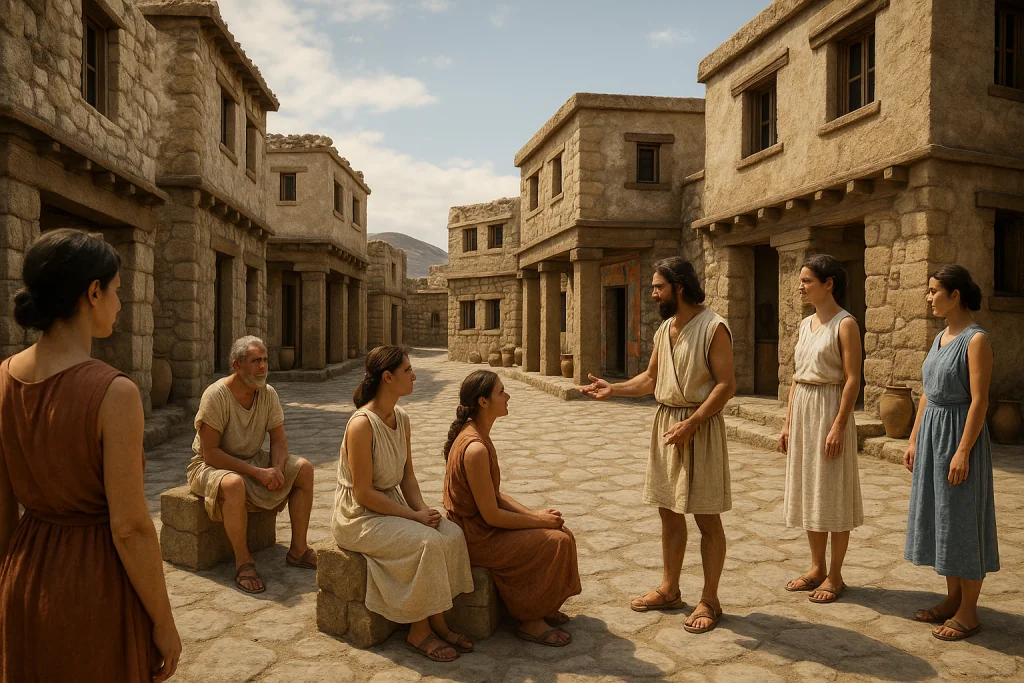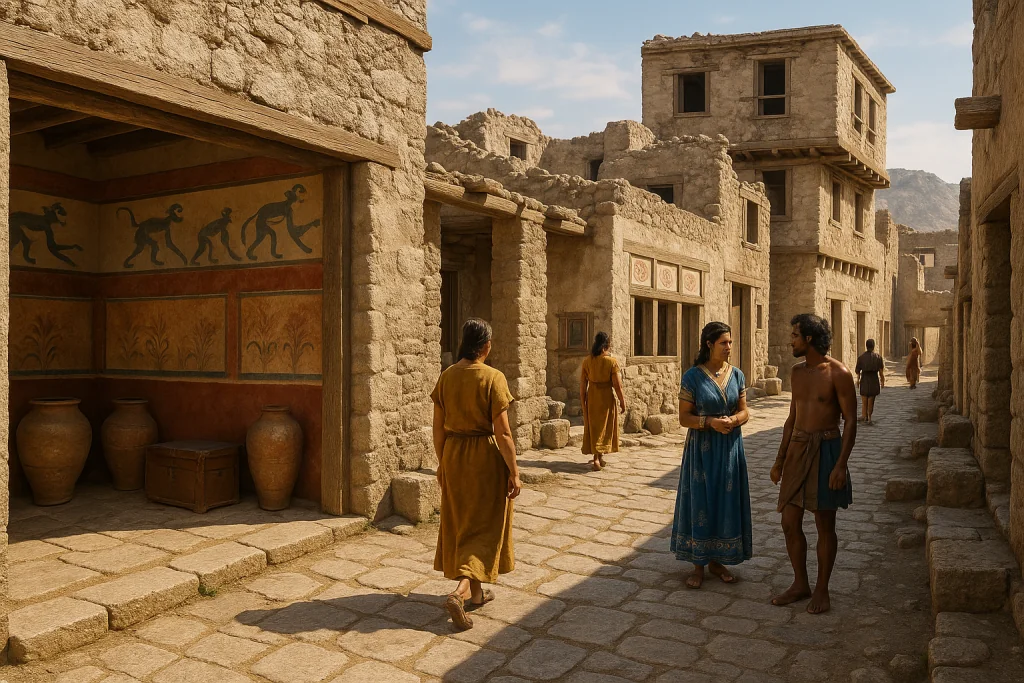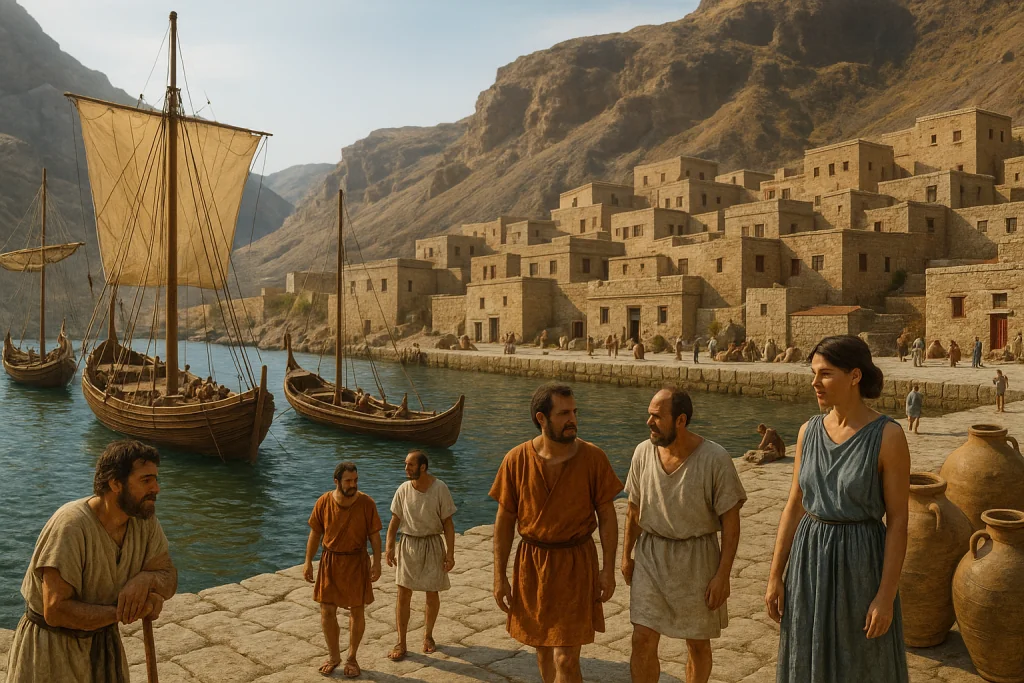Table of Contents
Introduction
Long before modern travelers flocked to Santorini’s caldera, the People of Akrotiri thrived on this volcanic island in the heart of the Aegean. These seafaring cosmopolitans lived in a bustling port city that boasted stunning architecture, intricate frescoes, and a vibrant economy.
Their daily lives, frozen in time by the catastrophic eruption around 1600 BCE, reveal a society that was sophisticated, prosperous, and deeply connected to the wider Mediterranean world. By exploring their homes, squares, and material culture, we gain a vivid picture of who these remarkable people were and how they lived.
A Bustling Port City at the Crossroads of the Aegean

The People of Akrotiri were far more than simple islanders—they were skilled sailors, merchants, and craftsmen who maintained dynamic trade routes with Crete, mainland Greece, Egypt, and the Near East.
Akrotiri’s strategic location made it a key hub for commerce, where ships laden with pottery, textiles, metals, and exotic goods arrived from distant lands. Archaeologists have uncovered storerooms filled with imported objects, proving the inhabitants’ wealth and cosmopolitan tastes. The city’s harbor bustled with activity, reflecting a society that embraced cultural exchange and maritime adventure.
Sophisticated Urban Living: Homes, Squares, and Daily Life

Life in Akrotiri was surprisingly modern by Bronze Age standards. Many houses rose three stories high, featuring light wells, wooden staircases, and elaborately decorated walls. Public squares like the “Square of the Weaver” served as gathering places for trade, social interaction, and community events.
Streets paved with stone connected these squares, and a sophisticated drainage and sewage system hinted at a society that valued hygiene and organization. Everyday objects—from cooking pots to furniture—display remarkable craftsmanship, while luxurious touches like colorful plastered walls reveal the inhabitants’ appreciation for beauty and comfort.
The Cosmopolitan Spirit: Fashion, Art, and Culture
The People of Akrotiri expressed their identity through fashion and art. Frescoes depict men and women wearing finely woven clothes, adorned with jewelry and intricate hairstyles. Scenes of fishing, festivals, and rituals offer glimpses into their beliefs and celebrations.
Their artistic style blends Cycladic, Minoan, and local influences, demonstrating a diverse and interconnected culture. Children’s toys, tools, and household items show a society attentive to both daily needs and aesthetic expression, highlighting a community where art and life were inseparable.
A Community Resilient to Nature’s Fury

Despite living on a geologically active island, the People of Akrotiri showed resilience and adaptability. Evidence suggests they rebuilt their city multiple times after earthquakes, each time enhancing their homes and public spaces. However, the final, colossal eruption of Thera sealed their fate.
The absence of human remains hints they may have evacuated, but their lives and legacy endure through the perfectly preserved ruins that allow us to meet them across millennia.
Conclusion
The People of Akrotiri were seafarers, artisans, and visionaries who built a flourishing city on the edge of a volcano. Their story, captured in the remnants of their homes and their vibrant art, reveals a society of remarkable sophistication and cultural richness.
Exploring Akrotiri today is not just an archaeological journey—it’s a chance to step into the world of these extraordinary people and experience the pulse of a lost Aegean civilization.

